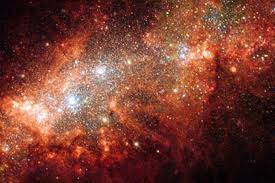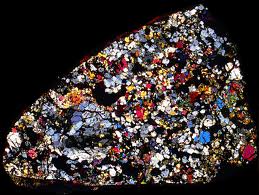

Cosmic Lens Used for the First Time to Study “Dark Energy”
Astronomers have devised a new method for measuring what is perhaps the greatest puzzle of our universe—“dark energy.” This mysterious force, discovered in 1998, is pushing our universe apart at ever-increasing speeds.
Now for the first time, in a study reported in the Aug. 20 issue of the Journal Science, astronomers using NASA’s Hubble Space Telescope were able to take advantage of a giant magnifying lens in space—a massive cluster of galaxies—to narrow in on the nature of dark energy. Their calculations, when combined with data from other methods, significantly increase the accuracy of dark energy measurements. This may eventually lead to an explanation of what the elusive phenomenon really is.
“We have to tackle the dark energy problem from all sides,” said JPL astronomer Eric Jullo. “It’s important to have several methods, and now we’ve got a new, very powerful one.” Jullo is lead author of the paper on these findings.
Scientists aren’t clear about what dark energy is, but they do know that it makes up a large chunk of our universe—about 72 percent. Another chunk, about 24 percent, is thought to be “dark matter,” also mysterious in nature but easier to study than dark energy because of its gravitational influence on the matter that we can see. The rest of the universe, a mere 4 percent, is the stuff that makes up people, planets, stars, and everything made up of atoms.
In their new study, the science team used images from Hubble to examine a massive cluster of galaxies, named Abell 1689, which acts as a magnifying, or gravitational, lens. The gravity of the cluster causes galaxies behind it to be imaged multiple times into distorted shapes, like a fun-house mirror reflection that warps your face.
Using these distorted images, the scientists were able to figure out how light from the more distant, background galaxies had been bent by the cluster—a characteristic that depends on the nature of dark energy. Their method also depends on precise ground-based measurements of the distance and speed at which the background galaxies are traveling away from us. The team used these data to quantify the strength of the dark energy that is causing our universe’s expansion to accelerate.
“What I like about our new method is that it’s very visual,” said Jullo, “You can literally see gravitation and dark energy bend the images of the background galaxies into arcs.”
According to the scientists, their method required multiple, meticulous steps. They spent the last several years developing specialized mathematical models and precise maps of the matter—both dark and “normal”—constituting the Abell 1689 cluster.
“We can now apply our technique to other gravitational lenses,” said co-author Priya Natarajan, an astronomer at Yale University, New Haven, Conn. “We’re exploiting a beautiful phenomenon in nature to learn more about the role that dark energy plays in our universe.”
Images and more information about the results of this study:
* http://hubblesite.org/news/2010/26
* http://www.nasa.gov/jpl
* http://www.spacetelescope.org/news/html/heic1014.html
You can contact Bob Eklund at [email protected], or visit his website at www.bobeklund.com.





Be the first to comment